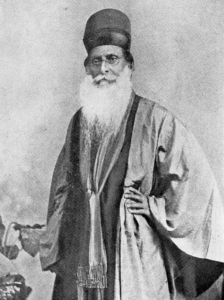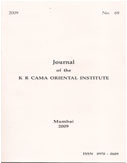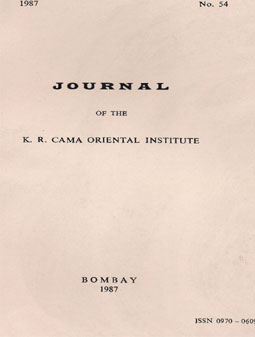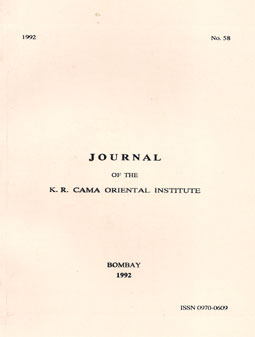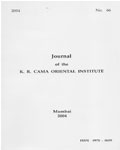Description
Journal No.69 (2009)
This issue of the journal carries two well researched articles by eminent European scholars.
This issue of the journal carries two well researched articles by eminent European scholars.
Dr. Raham Asha is a research scholar whose studies on Perso-Aryan linguistics often involve the reconstruction of the conceptual universe of the Mazdayasnians. The books written by him include “The Cosmic Doctrine of the Magi” (1995), “The Medical Doctrine of the Magi” (1999), “The Significance of the Sacred Girdle” (2005) and “Avesta Glossary” (2009.) The last two books have been published by the K R Cama Oriental Institute.
In this issue of our Journal carries Dr. Asha’s article titled “The Avesta Texts : Introduction” where he presents an overview of the traditional approach to the corpus of the Avesta as was fianlly restored by Tosar (3rd. century A.D.) He also attempts to give a picture of the first book of the corpus, the Studgar Naskaccording to the ninth book of the Denkird (and some other Parsig texts.) The article contains a number of comparative notes to guide the reader.
Dr. (Ms.) Mihaela Timuş is a Scientific Researcher at the Institute for the History of Religions, Romanian Academy, Bucharest. Her doctoral disertation at Ecole Pratique des Hautes Études, Section de Sciences Religieuses, Paris was on “Fonder, bâtir, rénover. Articulations conceptuelles du systeme religieux Zoroastrian d’expression moyenneperse. Une approache historiographique et philologique.”
In 2005, she authored the book “It is always the Orient. The correspondence between Mircea Eliade and Stig Wikander (1948 – 1977)”
In February 2010 she delivered the Dinshaw J Irani Memorial Lectures at the K R Cama Oriental Institute.
Dr. (Ms.) Mihaela Timuş article in this issue is titled “Encircled Against Evil: Commentary on an ossuary in Samarqand.” It aims to provide an interpretation of an iconographical motif in the light of Zoroastrian religious sources. A brief survey of Western scholarship regarding the presence of Zoroastrianism in Central Asia is presented while introducing the interpretation which focuses on the sybolism of binding by chains and bonds.
This book is priced at US$18.00, inclusive of air-mail postage, packing, handling and bank charges.

